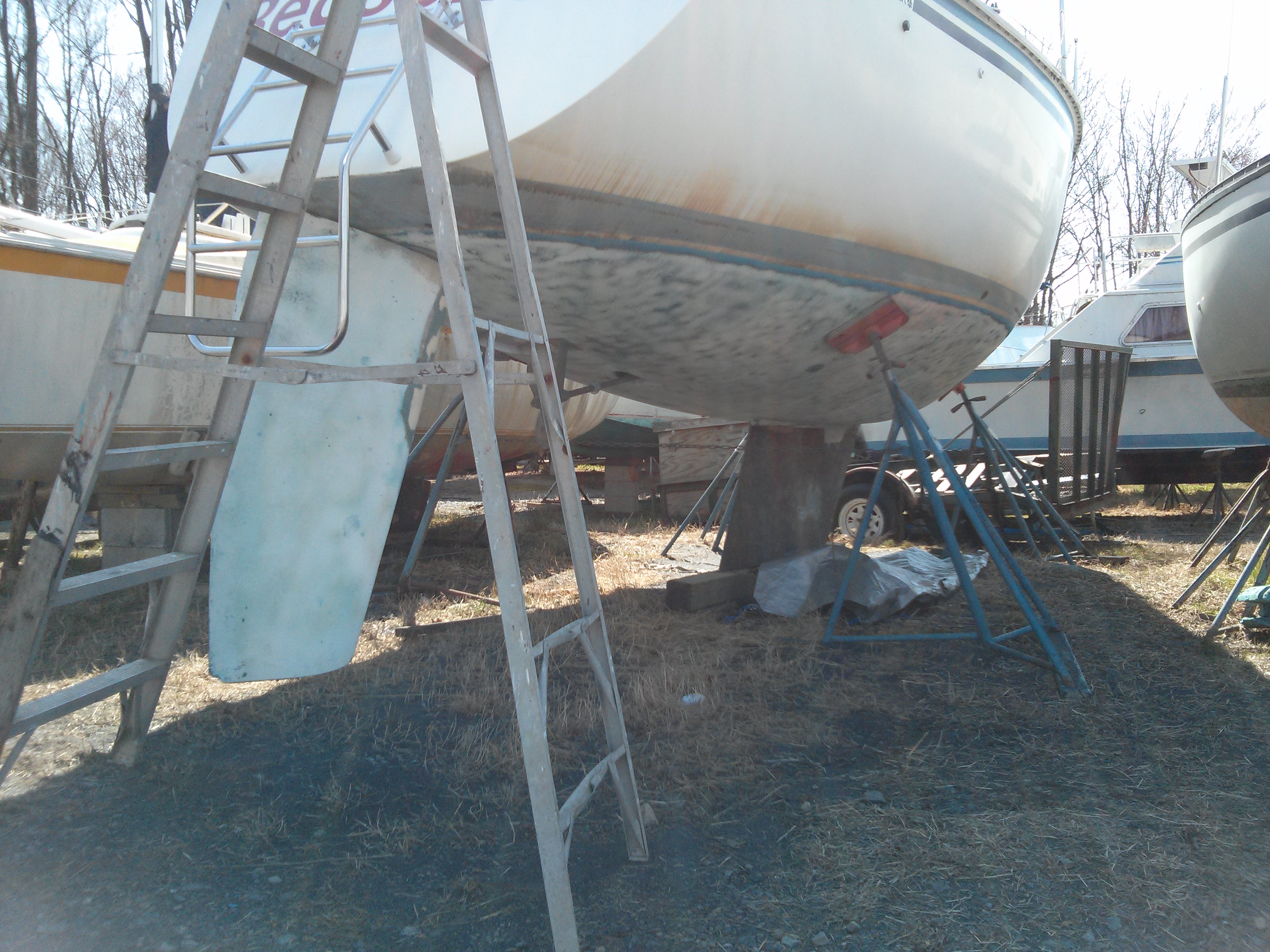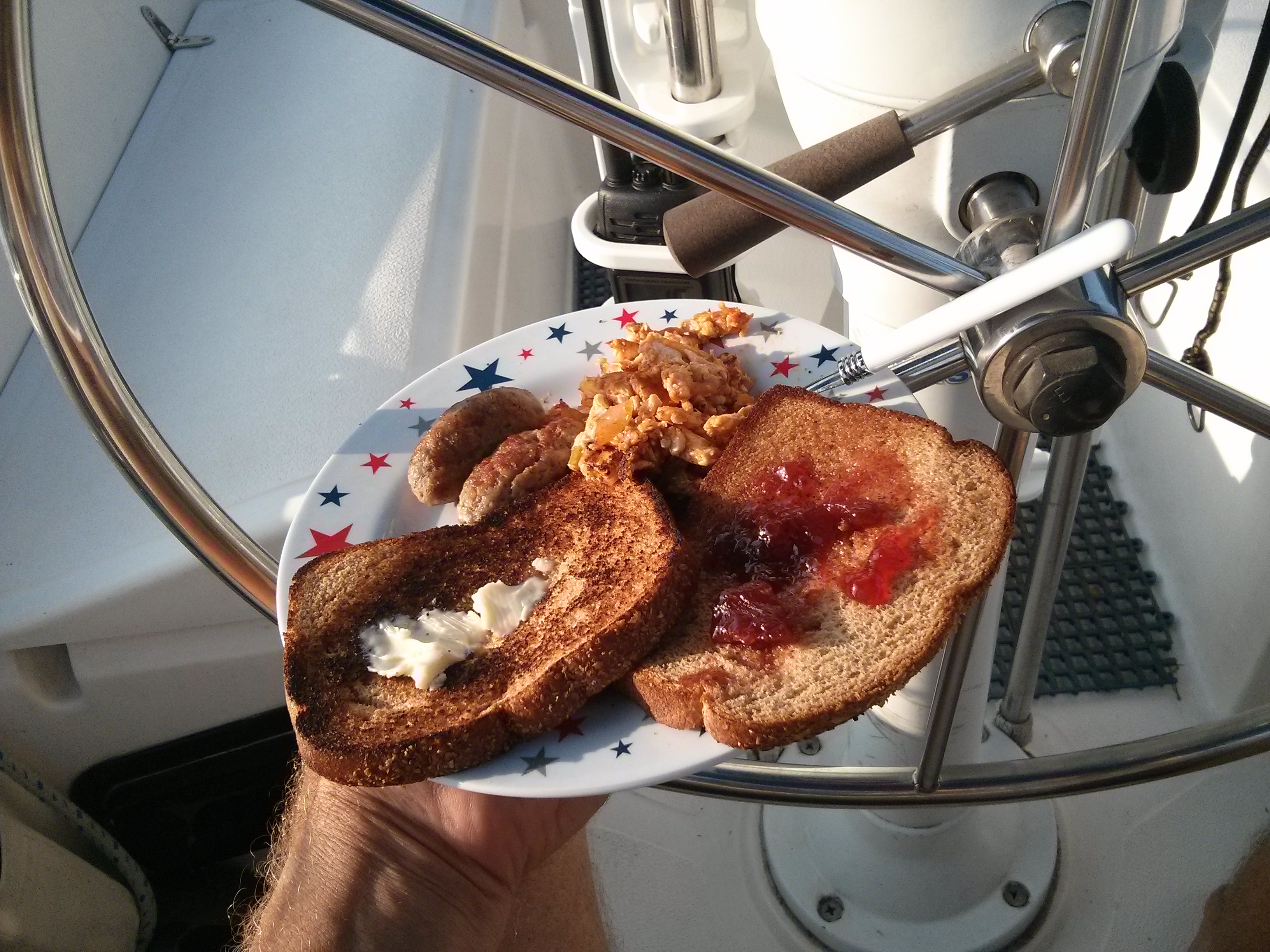We recently moved from near Philadelphia to SW Florida. The very last part of the move was to get our sail boat to our new home. Our Hunter 28.5 had spent the winter on the hard in Chesapeake City, where it received a lot of loving attention – including a new bottom job, a chartplotter, new through-hulls and a new bimini.
We had already moved all of our stuff to our new home and rented a one-way car to bring us north from Florida, staying with some good friends for a few days while we provisioned the boat.
For cockpit guidance, we relied on Moeller & Kettlewell’s Cockpit Cruising Guide and the associated spiral-bound ChartBook. You can buy both of these for about $75 from Amazon. These books were literally never out of my reach during the entire trip. With these two books and a chartplotter, we always knew where we were and what was coming up next. More-importantly, we could easily plan where were going to stop at the end of the day. We always knew how far we were from the next marina. That’s a good thing to know.
The length of our trip was about 1300 miles. We set a goal of about 50 miles a day, based on our cruising speed with our little Yanmar diesel. We were able to do the 50 miles, but it would have been more fun not to rush so much. We were hoping to get in as much sailing as possible, but if we couldn’t sail, we knew that the diesel would get us there.
At the end of each day, after tying up the boat and hooking up, I wrote the log and planned for our next day’s destination, noting the marinas available both before and after our planned destination. Originally, I thought that we could just treat the trip down the ICW like a car road trip, and just pull into a handy marina when we were done for the day. Not a good idea, though. It became obvious that there wasn’t always a marina handy when you wanted one – and during this part of the summer, many of them closed by 5 pm. We had the phone numbers, locations, descriptions and VHF channels available in the Guide. As I said, it was a great book to have.
We decided that we were only going to travel in daylight as we would be spending all of our time in unfamiliar waters. Except for emergencies, we kept to this rule. It was interesting to see how the loss of daylight through July into August affected when we could leave in the mornings. At the end of the trip, sunrise was coming 40 minutes or so later than when we left. We developed a routine. I would wake up with the sun (or maybe a little before), grab a quick shower, walk Bonnie The Pampered Lhasa, fill the water tank. disconnect and stow the shore power, cast off and fire up the diesel. Monica would wake up a little later and start breakfast. I had coffee and a hot breakfast every morning because Monica is just that cool.
Our plan was to spend every night at a marina, taking advantage of their WIFI, hot showers and restaurant – if possible. There were plenty of opportunities to save money by spending nights on the hook, but the purpose of this trip was not to save money, but to get our boat home with as little hassle as possible. At $1.75/foot, it was less than $50 a night to stay at the transient docks at most marinas Some places were less, a few were more – but it averaged out to less than $50/night. Less than a Red Roof Inn, in most places…
Some stuff we learned:
- Alcohol stoves suck. Our little ship came with an alcohol stove. It worked. It also made nasty fumes. We had used it only occasionally until this voyage. Early in the trip, we purchased a cheap ($27) 2-burner propane camp stove at a Walmart and some small propane bottles and never looked back. It fit on top of the alcohol stove as if it was made for that purpose.
- Always use your own water hose. It was late and I grabbed someone else’s hose once and put what must have been month-old stagnant, stinky unchlorinated hose water in our tank. Had to flush it twice. Did I save time? No.
- Have lots of spares. Some marinas had stores, but they were much more interested in selling you Budweiser than a 3/4″ plastic barbed hose repair fitting (we had the clamps). It took us a couple of days to get one after the vent hose on our waste tank chafed through. Duct tape was on board, though, so it wasn’t a total stink disaster.
- A shakedown cruise would have helped. We left our winter marina on the high tide an hour after we splashed the boat and didn’t do anything before leaving on the trip. As it turned out, we had a small hose (new) in the drain hose from the anchor locker. Unless there was a lot of rain, or we had waves over the bow (or someone overflowed the water tank), everything was OK, but the end of the V-Berth got damp a couple of times, and it took us some time to find out what was going on. It took me a half-hour to replace that 18 inch piece of hose, but it didn’t happen until we finished the trip.
- Salt water spray will completely mess up the coating on prescription glasses (self-explanatory).
We learned some other stuff that I’ll remember, I’m sure, as I write up the rest of the trip. To keep things simple, I’ll put the posts, arranged by day, in the ICW section (see the tab at the top of the page).
If you’re planning to take this trip, I hope that you can learn something from our experiences.
The daily logs and such are in a separate part of the blog. Here’s a quick link.


Leave a Reply